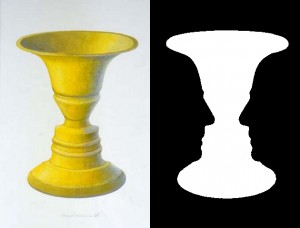Antagonyms, Social Circles and Chattering about VRM is  a deep and helpful piece by Cliff Gerrish on his Echovar blog. He starts by visiting antagonyms and contranyms (words that carry dual and opposing meanings) and how context tilts perception and meaning toward one side or another. By example he suggests that Google’s problems with Buzz were (at least in part) a result of internal perspective and experience (“Google launched Buzz as a consumer product, but tested it as an enterprise product”). From there he suggests that CRM and VRM also require that we consider perspective and reciprocity:
a deep and helpful piece by Cliff Gerrish on his Echovar blog. He starts by visiting antagonyms and contranyms (words that carry dual and opposing meanings) and how context tilts perception and meaning toward one side or another. By example he suggests that Google’s problems with Buzz were (at least in part) a result of internal perspective and experience (“Google launched Buzz as a consumer product, but tested it as an enterprise product”). From there he suggests that CRM and VRM also require that we consider perspective and reciprocity:
Meanwhile, SalesForce.com introduces Chatter to the enterprise and rolls it out at no extra charge to all employees on the internal network. And while it will start inside the enterprise, Chatter will quickly expand to the boundaries and begin to cross over. From a business perspective, it’ll be used to turbo-charge collaboration and create real-time communication for project teams and business units. But very quickly you’ll see friends sending messages to each other about meeting up for lunch, and a public-personal communications channel will be opened within the enterprise. And the circles will connect and widen from there.
Here are a couple more Contranyms:
clip (attach to) – clip (cut off from)
cleave (to cut apart) – cleave (to seal together)
Salesforce.com calls itself the leader in Customer Relationship Management and Cloud Computing. Chatter may just be the communication medium that ultimately contains both CRM and its opposite number, VRM. Vendor Relationship Management is a reaction to the data toolsets belonging to the enterprise and not to the individual customer.
In a narrow sense, VRM is the reciprocal — the customer side — of CRM (or Customer Relationship Management). VRM tools provide customers with the means to bear their side of the relationship burden. They relieve CRM of the perceived need to “capture,” “acquire,” “lock in,” “manage,” and otherwise employ the language and thinking of slave-owners when dealing with customers. With VRM operating on the customer’s side, CRM systems will no longer be alone in trying to improve the ways companies relate to customers. Customers will be also be involved, as fully empowered participants, rather than as captive followers.
If you were to think about what kind of infrastructure you’d want to run VRM on, Salesforce.com would be ideal. To run the mirror image of CRM, you need the same set of services and scale. The individual Chatter account could be the doorway to a set of VRM services. I can already see developers using the Force.com platform to populate a VRM app store.
Some corporations will attempt to maximize the business value of each individual worker, stripping out all the extraneous human factors. Chinese walls will be erected to keep the outside from the inside, the personal from the business, and the public from the private. But when you put messaging and communications tools into the hands of people they will find ways to talk to each other— about work, life, play, the project, and the joke they just heard at the water cooler.
I’ll need to study Salesforce’s services before I venture opinions about how well they apply on the VRM side. But in the meantime I do think there is an especially appropriate optical illusion for illustrating CRM/VRM reciprocity: the Rubin Vase:
As Wikipedia currently puts it,
Rubin’s vase (sometimes known as the Rubin face or the Figure-ground vase) is a famous set of cognitive optical illusions developed around 1915 by the Danish psychologist Edgar Rubin. They were first introduced at large in Rubin’s two-volume work, the Danish-language Synsoplevede Figurer (“Visual Figures”), which was very well-received; Rubin included a number of examples, like a Maltese cross figure in black and white, but the one that became the most famous was his vase example, perhaps because the Maltese cross one could also be easily interpreted as a black and white beachball.
One can then state as a fundamental principle: When two fields have a common border, and one is seen as figure and the other as ground, the immediate perceptual experience is characterized by a shaping effect which emerges from the common border of the fields and which operates only on one field or operates more strongly on one than on the other.
Says Rubin (in Synsoplevede Figurer, 1915),
One can then state as a fundamental principle: When two fields have a common border, and one is seen as figure and the other as ground, the immediate perceptual experience is characterized by a shaping effect which emerges from the common border of the fields and which operates only on one field or operates more strongly on one than on the other.
Over the next century Rubin’s vase illusion has more commonly been illustrated with a wine glass between two faces (perhaps because we’re drinking more and arranging flowers less):
I think this imagery does a better job of illustrating the figure-ground distinctions of CRM and VRM. I suggest that CRM sees the wine glass (from which they might drink from the wealth of well-managed relationships with customers), while VRM sees two faces that represent one-to-one interactions between equals.
After CRM and VRM come to be working well together, vendors and customers will still have their own tilted perspectives — one’s figure will be the other’s ground — but both will be fully present.
As of today that’s not the case. CRM is a multi-$billion industry, while VRM is just getting started. Perhaps, by thinking about CRM from a VRM perspective (and vice versa), we can build out tools and solutions better, and faster.



